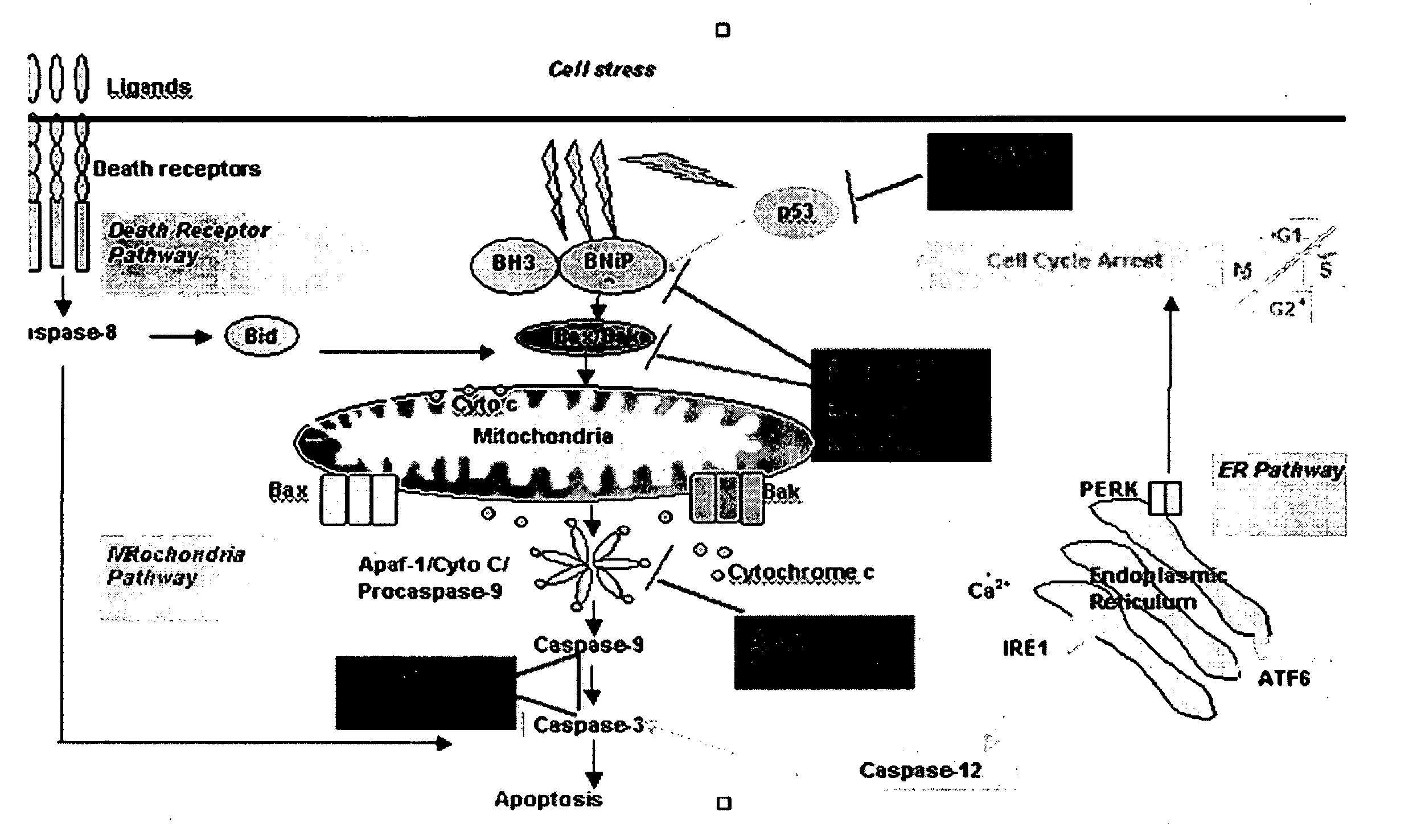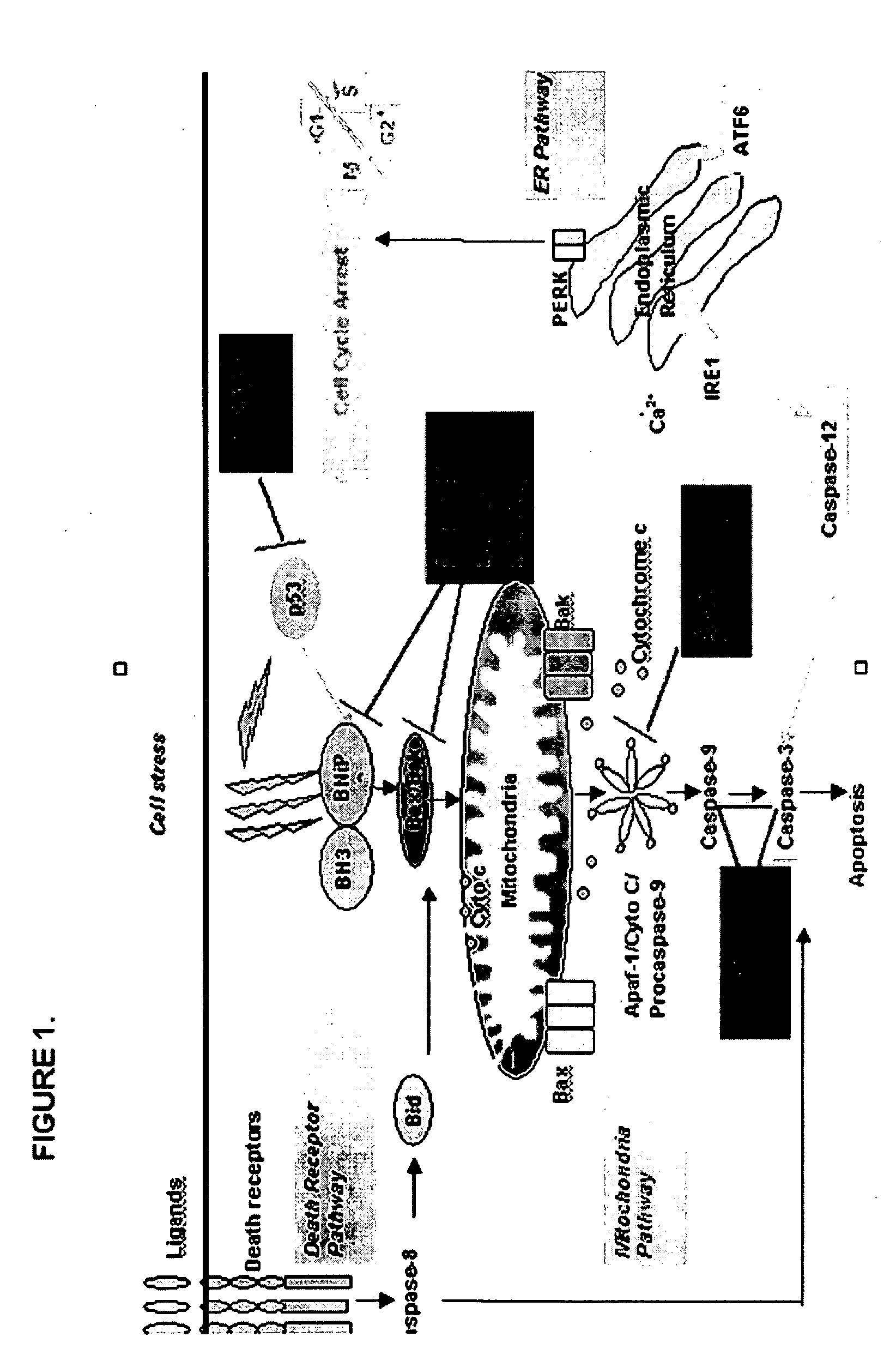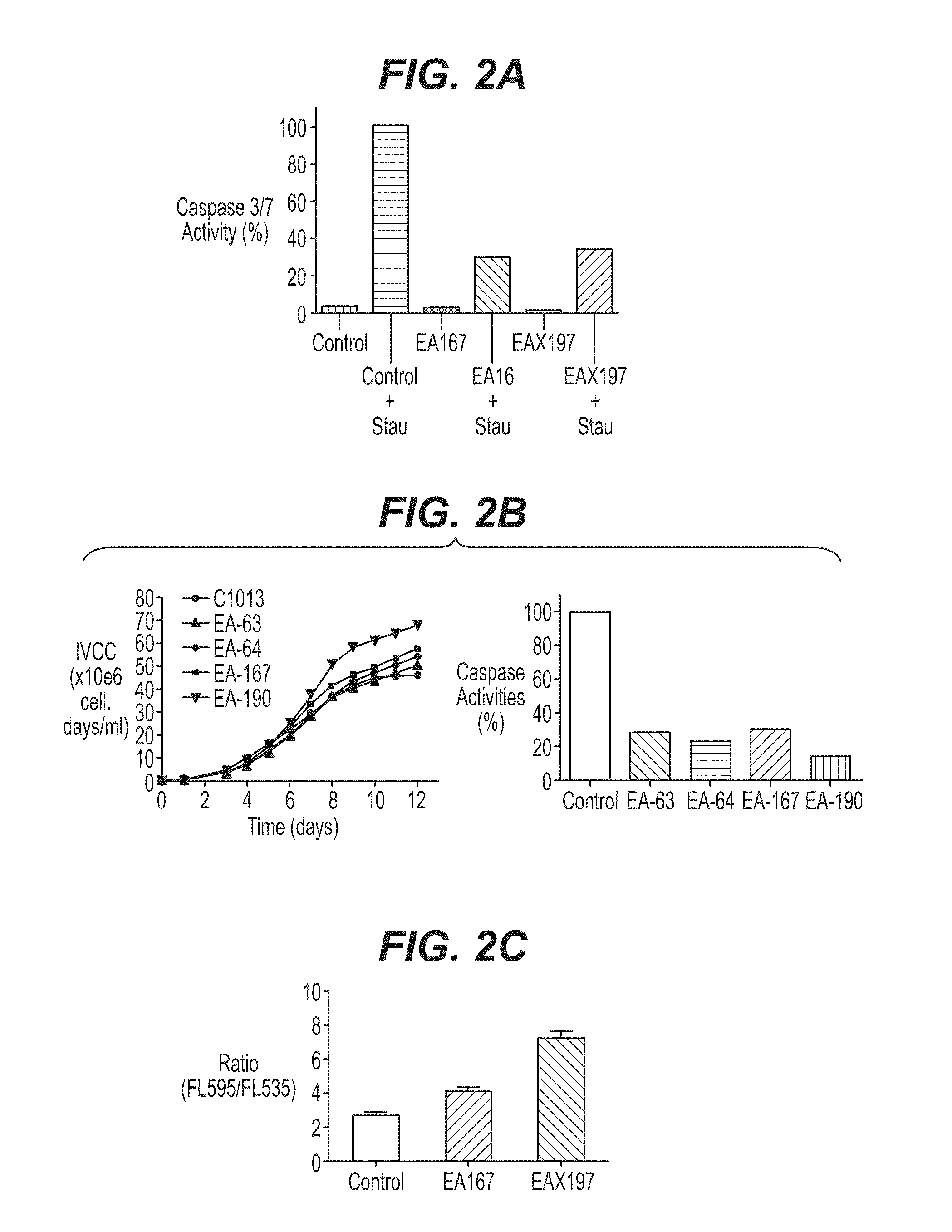Methods for Obtaining High Viable Cell Density in Mammalian Cell Culture
a cell culture and cell technology, applied in the direction of artificial cell constructs, fused cells, genetically modified cells, etc., can solve the problems of unstudied effect of anti-apoptotic genes on the cellular metabolic state of cells, waste accumulation and its detrimental effect on cell growth, etc., and achieve high viable cell density
- Summary
- Abstract
- Description
- Claims
- Application Information
AI Technical Summary
Benefits of technology
Problems solved by technology
Method used
Image
Examples
example 1
Generation and Characterization of Apoptotic-Resistant Cell Lines
[0058]A list of cell lines used in this study, the expression plasmids that were transfected in each case to generate the cell lines and the selection agent(s) used for isolating the transfectomas is shown in Table 1 above. The cell lines listed are representative of multiple clones that were generated from each transfection. The name of each cell line was derived from the anti-apoptotic genes that were transfected into the host cell line. For example, EAX197 is a cell line that was transfected with E1B-19K (E), Aven (A) and XIAPΔ (X). The notation, apoptoticR, will be used to refer to a cell line that has been transfected by one or more of these anti-apoptotic genes.
[0059]All apoptoticR cell lines used in this study were characterized by Western blotting, caspase 3 / 7 activity and mitochondrial membrane potential (data not shown). The single transfectant E64, or double transfectants EA63, EA112, EA167 and EA190, all ex...
example 2
Effect of E1B-19K on Viable Cell Density of CHOK1SV
[0065]The growth profiles of double transfectants over-expressing E1B-19K in conjunction with Aven (EA167), triple transfectants over-expressing E1B-19K in conjunction with Aven and XIAPΔ (EAX197), as well as the transfectant over-expressing E1B-19K only (E64) are compared to the control (host) cell line in FIG. 4. While the peak VCD of the control cell line reached 7.7×106 cells / ml and the peak VCD of E64 (expressing E1B-19K only) was 8.9×106 cells / ml, that of EA167 was 1.4×107 cells / ml and that of EAX197 was more than 1.5×107 cells / ml, an increase of over 190% above the control cell line. The viability of EA167 and EAX197 showed a sharp decline by d8 or d9 post-seeding, presumably because of nutrient depletion, while the control and the E64 cell lines viability declined more slowly (FIG. 4B). The net effect on IVCC is shown in FIG. 4C. The IVCC of the control cell line was 4.9×107 cell-day / ml, followed by that of E64 (5.2×107 cell...
example 3
Metabolic Profile of ApoptoticR Cell Lines
[0067]In order to compare the physiology of the apoptoticR cell lines EA167 and EAX197 which could protect against apoptosis to the control cell line in batch cultures, the levels of key nutrients and amino acids that were provided at the beginning of the batch culture, namely, glucose, glutamate and glutamine, were monitored. Additionally, the accumulation of the waste products ammonia and lactate were also monitored. Shown in FIG. 5 are the levels of these metabolites when EAX197 and EA167 as well as control cell line were cultured in batch mode in shake-flasks in commercial CD-CHO medium. As shown in FIG. 5A, glucose is rapidly depleted from the medium of all three cell lines by day-6 or day-7 post-seeding. No significant differences in glutamine depletion were discernable between apoptoticR and control cell lines and glutamate levels did not vary greatly for the three cell lines across all days (data not shown). All three cell lines show...
PUM
| Property | Measurement | Unit |
|---|---|---|
| concentrations | aaaaa | aaaaa |
| density | aaaaa | aaaaa |
| viable cell density | aaaaa | aaaaa |
Abstract
Description
Claims
Application Information
 Login to View More
Login to View More - R&D
- Intellectual Property
- Life Sciences
- Materials
- Tech Scout
- Unparalleled Data Quality
- Higher Quality Content
- 60% Fewer Hallucinations
Browse by: Latest US Patents, China's latest patents, Technical Efficacy Thesaurus, Application Domain, Technology Topic, Popular Technical Reports.
© 2025 PatSnap. All rights reserved.Legal|Privacy policy|Modern Slavery Act Transparency Statement|Sitemap|About US| Contact US: help@patsnap.com



